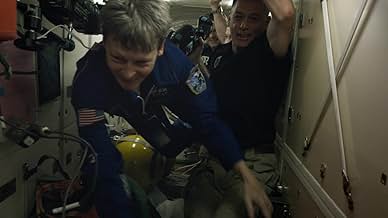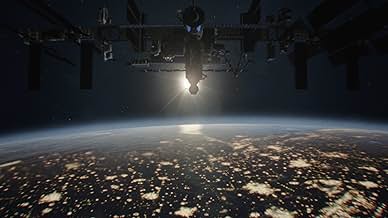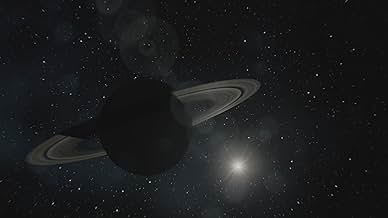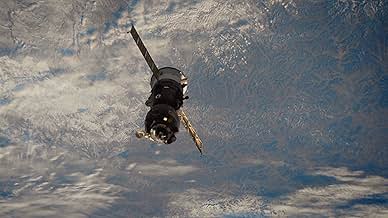IMDb-BEWERTUNG
8,7/10
8507
IHRE BEWERTUNG
Die außergewöhnliche Geschichte der Erde und warum sie etwas Besonderes ist und in einer weitgehend unbekannten aber rauen kosmischen Arena vor Leben strotzt. Astronauten erzählen die Geschi... Alles lesenDie außergewöhnliche Geschichte der Erde und warum sie etwas Besonderes ist und in einer weitgehend unbekannten aber rauen kosmischen Arena vor Leben strotzt. Astronauten erzählen die Geschichte der Erde aus einer einzigartigen PerspektiveDie außergewöhnliche Geschichte der Erde und warum sie etwas Besonderes ist und in einer weitgehend unbekannten aber rauen kosmischen Arena vor Leben strotzt. Astronauten erzählen die Geschichte der Erde aus einer einzigartigen Perspektive
- Auszeichnungen
- 1 Gewinn & 3 Nominierungen insgesamt
Folgen durchsuchen
Empfohlene Bewertungen
Oh if only more TV was this quality! Well shot, well produced, execellent narrative, meaningful. Every bit as good as Blue Planet. For every age 3-103. Thank you to all who labored to bring us this incredible program. I hope it is long lived.
Some of the negative reviews here do tell a certain truth, One Strange Rock does not necessarily break all.sorts of new ground with a sorts of new information. It does deliver though, it's a beautiful show and the information is delivered in new and stunnunstu beautiful ways. To not watch this show because you think you've heard it all before would be a practice in absolute arrogance and unfortunate ignorance. The last thing any of us need to do is fool ourselves in to thinking we have learned enough. We owe it to all of these people to educate ourselves with the information they gave their lives bringing to all humanity:
Mission: Apollo 1 Date: Jan. 27, 1967 Fatalities: Gus Grissom, Edward White II, Roger Chaffee What happened: During a launch-sequence rehearsal for NASA's AS-204 Apollo mission, the cabin was filled with pure oxygen as part of its environmental control system. An electrical fault sparked a flash fire in the cabin. The fire spread quickly in the pure oxygen atmosphere, suffocating all three Apollo 1 crew members through smoke inhalation. The launch pad test site was renamed Apollo 1 in honor of the crew, and the accident led to major design and engineering modifications as well as revisions to test planning operations and manufacturing procedures.
Mission: Soyuz 1 Date: April 24, 1967 Fatalities: Vladimir Komarov What happened: Soyuz 1, the Soviet space program's one-day mission, launched on April 23, 1967, but soon began experiencing various mechanical issues the solar panels did not unfold, and the vessel experienced stability problems. After the Soyuz module re-entered the atmosphere April 24, its parachute did not open properly, causing it to crash to Earth at almost full speed. Cosmonaut Vladimir Komarov died on impact.
Advertisement
Mission: Soyuz 11 Date: June 30, 1971 Fatalities: Georgi Dobrovolski, Viktor Patsayev, Vladislav Volkov What happened: Soyuz 11 launched on June 6, 1971, and docked with the space station Salyut 1 for a three-week stay. When the vehicle undocked, a valve on the Soyuz 11 accidentally opened, causing a pressure leak in the cabin. The three cosmonauts were killed as the capsule depressurized during preparations for atmospheric re-entry on June 30. The malfunctioning valve was discovered only when the module was opened by a recovery team.
Mission: STS-51-L Date: Jan. 28, 1986 Fatalities: Greg Jarvis, Christa McAuliffe, Ronald McNair, Ellison Onizuka, Judith Resnik, Michael J. Smith, Dick Scobee What happened: During the Space Shuttle Challenger's 10th mission, STS-51-L, the rockets propelling the vessel exploded 73 seconds after launching from the Kennedy Space Center in Florida. All seven crew members were killed. President Ronald Reagan formed the Rogers Commission to investigate the accident, and its analysis concluded it had been caused by the failure of an O-ring seal on one of the solid rocket boosters. The Challenger disaster resulted in a 32-month hiatus for the shuttle program .
Mission: STS-107 Date: Feb. 1, 2003 Fatalities: Rick D. Husband, William McCool, Michael P. Anderson, David M. Brown, Kalpana Chawla, Laurel B. Clark, Ilan Ramon What happened: At the end of its two-week mission, the Space Shuttle Columbia disintegrated as it re-entered the Earth's atmosphere. The accident was determined to have been caused by damage that had occurred during liftoff, when a chunk of insulating foam broke off from the external tank and hit the orbiter's left wing. The structural failure of the shuttle's leading wing ultimately resulted in the spacecraft breaking apart, killing the seven-person crew. All of the NASA space shuttle program's flight operations were delayed for 29 months following the disaster.
Mission: Apollo 1 Date: Jan. 27, 1967 Fatalities: Gus Grissom, Edward White II, Roger Chaffee What happened: During a launch-sequence rehearsal for NASA's AS-204 Apollo mission, the cabin was filled with pure oxygen as part of its environmental control system. An electrical fault sparked a flash fire in the cabin. The fire spread quickly in the pure oxygen atmosphere, suffocating all three Apollo 1 crew members through smoke inhalation. The launch pad test site was renamed Apollo 1 in honor of the crew, and the accident led to major design and engineering modifications as well as revisions to test planning operations and manufacturing procedures.
Mission: Soyuz 1 Date: April 24, 1967 Fatalities: Vladimir Komarov What happened: Soyuz 1, the Soviet space program's one-day mission, launched on April 23, 1967, but soon began experiencing various mechanical issues the solar panels did not unfold, and the vessel experienced stability problems. After the Soyuz module re-entered the atmosphere April 24, its parachute did not open properly, causing it to crash to Earth at almost full speed. Cosmonaut Vladimir Komarov died on impact.
Advertisement
Mission: Soyuz 11 Date: June 30, 1971 Fatalities: Georgi Dobrovolski, Viktor Patsayev, Vladislav Volkov What happened: Soyuz 11 launched on June 6, 1971, and docked with the space station Salyut 1 for a three-week stay. When the vehicle undocked, a valve on the Soyuz 11 accidentally opened, causing a pressure leak in the cabin. The three cosmonauts were killed as the capsule depressurized during preparations for atmospheric re-entry on June 30. The malfunctioning valve was discovered only when the module was opened by a recovery team.
Mission: STS-51-L Date: Jan. 28, 1986 Fatalities: Greg Jarvis, Christa McAuliffe, Ronald McNair, Ellison Onizuka, Judith Resnik, Michael J. Smith, Dick Scobee What happened: During the Space Shuttle Challenger's 10th mission, STS-51-L, the rockets propelling the vessel exploded 73 seconds after launching from the Kennedy Space Center in Florida. All seven crew members were killed. President Ronald Reagan formed the Rogers Commission to investigate the accident, and its analysis concluded it had been caused by the failure of an O-ring seal on one of the solid rocket boosters. The Challenger disaster resulted in a 32-month hiatus for the shuttle program .
Mission: STS-107 Date: Feb. 1, 2003 Fatalities: Rick D. Husband, William McCool, Michael P. Anderson, David M. Brown, Kalpana Chawla, Laurel B. Clark, Ilan Ramon What happened: At the end of its two-week mission, the Space Shuttle Columbia disintegrated as it re-entered the Earth's atmosphere. The accident was determined to have been caused by damage that had occurred during liftoff, when a chunk of insulating foam broke off from the external tank and hit the orbiter's left wing. The structural failure of the shuttle's leading wing ultimately resulted in the spacecraft breaking apart, killing the seven-person crew. All of the NASA space shuttle program's flight operations were delayed for 29 months following the disaster.
10jbdecker
Vivid and thought provoking. Photography and visuals are stunning. Fascinating perspectives from astronauts. Planet Earth on steroids!
Gives you a deep appreciation for earth and all of its complexities. Videography is simply stunning. An absolute MUST watch!
The visuals are breathtaking, as well as some of the side stories. However, Will smith hosting and the obviously scripted astronaut interviews puts a dent in the quality of it. Will Smith doesn't know about all of this and it's obvious. Great guy but not the man for this job. Also, sometimes you can tell how extremely scripted the astronauts interviews are. You can constantly see them, and will Smith sometimes, looking to the side of the camera to read the script. Also over-empathize simple points to avoid going very in-depth.
Despite my complaints, I still very much enjoyed the show. The visuals are stunning and the science is still fascinating. Definitely a good watch overall.
Despite my complaints, I still very much enjoyed the show. The visuals are stunning and the science is still fascinating. Definitely a good watch overall.
Wusstest du schon
- WissenswertesThe documentary was released on Netflix.
Top-Auswahl
Melde dich zum Bewerten an und greife auf die Watchlist für personalisierte Empfehlungen zu.
- How many seasons does One Strange Rock have?Powered by Alexa
Details
- Laufzeit
- 47 Min.
- Farbe
Zu dieser Seite beitragen
Bearbeitung vorschlagen oder fehlenden Inhalt hinzufügen



































